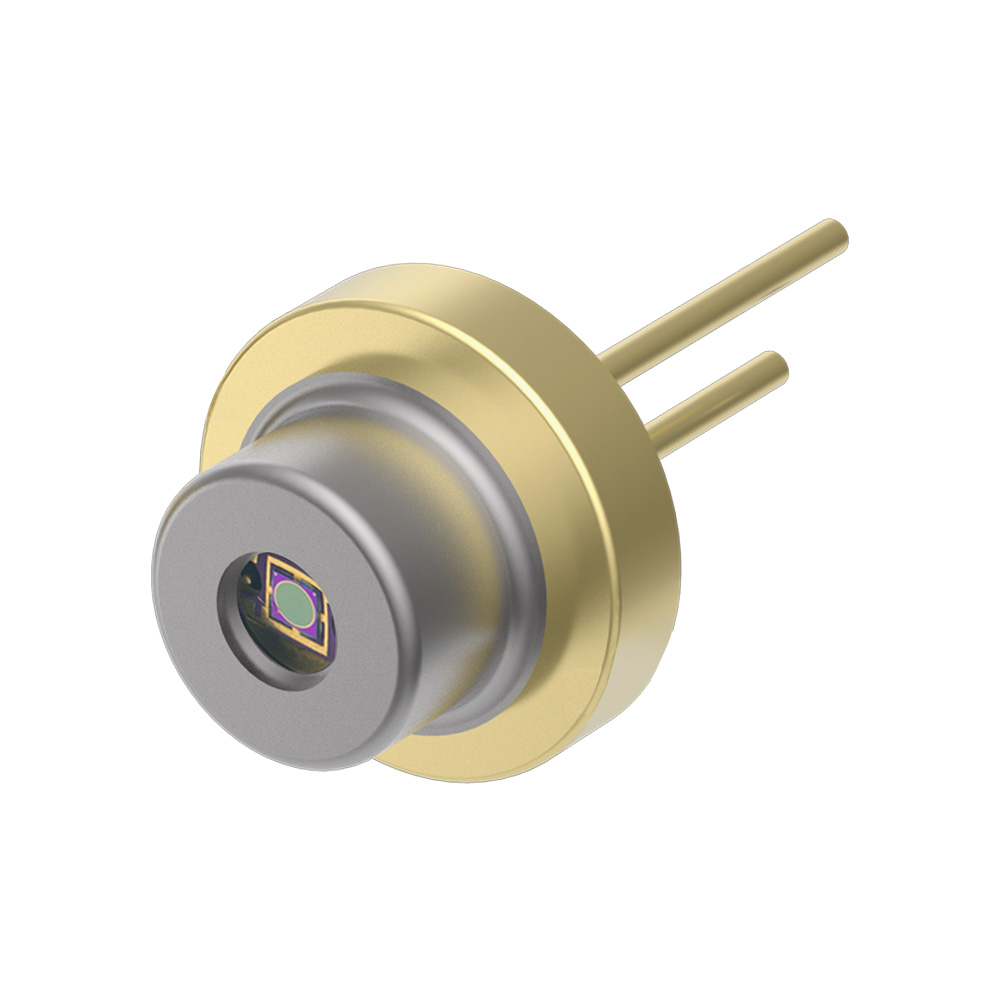Laser Power Meter

1、Principle of Photoelectric Power Meter
| Photodiode | Wavelength Range(nm) |
| Si |
200-1100 400-1100 |
| Ge |
800-1700 |
| InGaAs |
800-1700
800-2600 |

Photoelectric optical power meter is usually composed of probe and meter head, in which the key device of optical power meter probe is photodiode, based on the photoelectric effect directly converts the light energy into current or voltage signal, in order to characterize the size of the laser power. The so-called photoelectric effect, that is, the internal electrons in the substance under the action of photons to change the state. Photoelectric effect can be generally divided into external photoelectric effect and internal photoelectric effect, external photoelectric effect refers to photoelectrons in the photon excitation, can be escaped from the material internal phenomenon. The internal photoelectric effect can be divided into photoconductivity effect, photovoltaic effect and photomagnetic effect, and the optical power meter, generally used only to photoconductivity effect and photovoltaic effect.
The core part of a photodiode is a semiconductor PN junction. When a photon of sufficient energy is incident on the PN junction, it excites the electrons, thereby generating an electric current. The photoconductivity effect refers to the formation of a current within the semiconductor by electrons that have become free by absorbing the energy of photons under the action of an external electric field, thereby increasing the conductance of the semiconductor. In this mode, a reverse bias voltage needs to be applied to the photodetector and a dark current exists, which results in a large noise current with non-linearity. The magnitude of the reverse current depends on the incident optical power, and the reverse bias voltage significantly reduces the response time of the photodiode to the incident photon, which is usually used in high-speed applications. The photovoltaic effect is the "junction" effect of semiconductor materials, i.e., when incident light excites an electron-hole pair, an internal electric barrier separates the electron-hole pair, resulting in a charge buildup on both sides of the barrier, forming a photogenerated potential. In this mode, the photodetector is in a zero bias state, there is no dark current, has low noise, good linearity, and is suitable for more accurate measurements.
In power measurement applications, photodiode probes are often operated in photovoltaic mode, where its anode and cathode are connected to the input of a transimpedance amplifier, which converts the photocurrent into a voltage. In order to characterize the relationship between the optical power signal and the current signal, the introduction of the concept of spectral responsivity, photodiode responsivity is the ratio of the conduction current to the incident optical power, usually in units of "A/W". Spectral responsivity reflects the photodiode's ability to convert light signals into electrical signals, and the responsivity is closely related to the material used to manufacture the photodiode and the wavelength of the incident light. The responsivity of a photodiode changes over time due to aging. Photodiodes are based on the photoelectric effect and are therefore characterized by fast response time, high sensitivity, easy saturation, low power, and limited wavelength.
2、Difference between continuous laser and pulsed laser
Continuous lasers provide a steady emission of light, while pulsed lasers emit pulses of light arranged in time intervals.


Figure 1 Continuous and Pulsed Lasers
3、common terminology

1、Pulse Period
The pulse period T is the interval between the start of one pulse and the start of the next pulse in seconds (s).
2、Repetition Rate
Heavy frequency f is the frequency of the emitted pulse in hertz (Hz).
3、Pulse Energy
Pulse energy E is the amount of light emitted by the laser in one cycle in joules (J).
4、Average Power
The average power Pavg is the coordinate height of the optical power axis at which the pulse energy is uniformly distributed throughout the cycle, in watts (W).
5、Pulse Width
The pulse width t is the time used from the beginning to the end of the pulse, generally expressed as the half-height width of the pulse shape in seconds (s).
6、Peak Pulse
Peak power Ppeak is the highest instantaneous optical power of the laser in watts (W).
7、Duty Cycle
Duty cycle D is the percentage of the duration of the laser pulse emission.
The relationship between peak power and average power is
8、Instantaneous Power
Instantaneous power P is the optical power in watts (W) at a particular point in time.
Assuming a circular beam shape, the beam diameter is R , and the area S is
9、Pulse Energy Density
The pulse energy density Øe is the energy per unit area of the beam.
10、Average Power Density
The average power density Øavg is the average power per unit area of the beam.
11、Peak Power Density
Peak power density Øpeak is the peak power per unit area of the beam.


